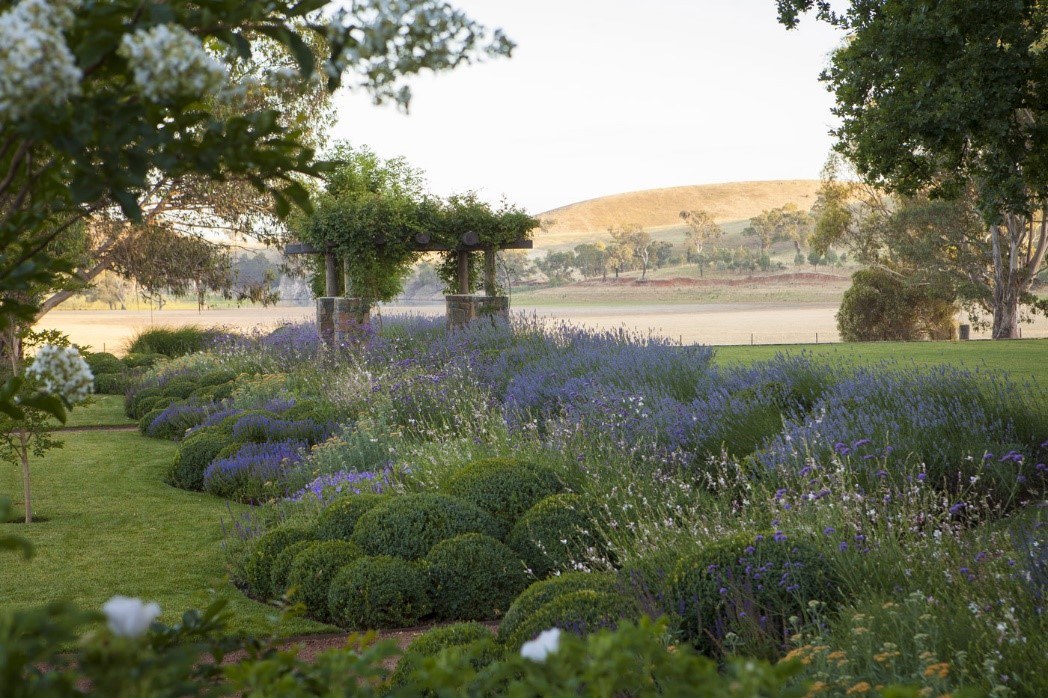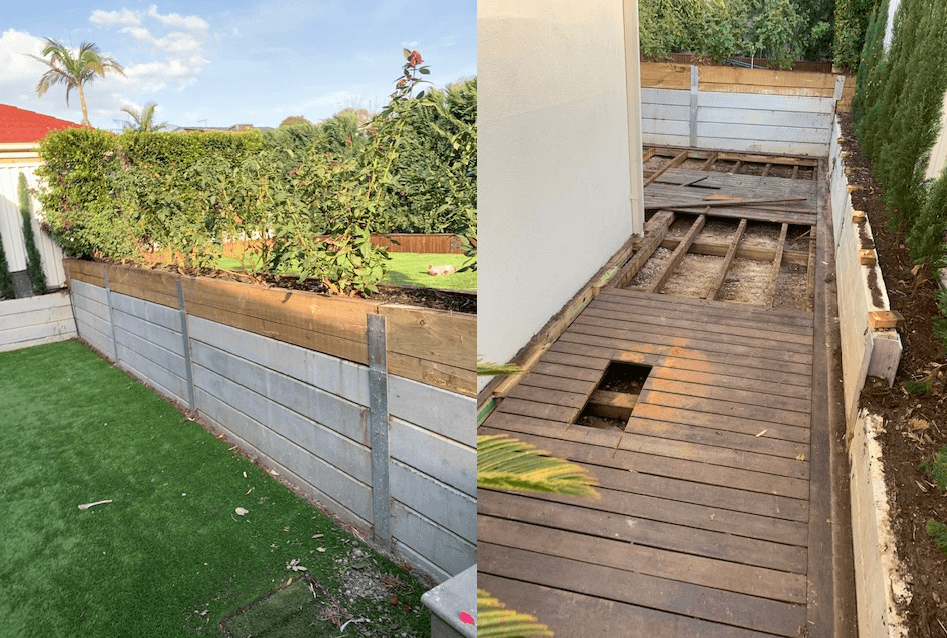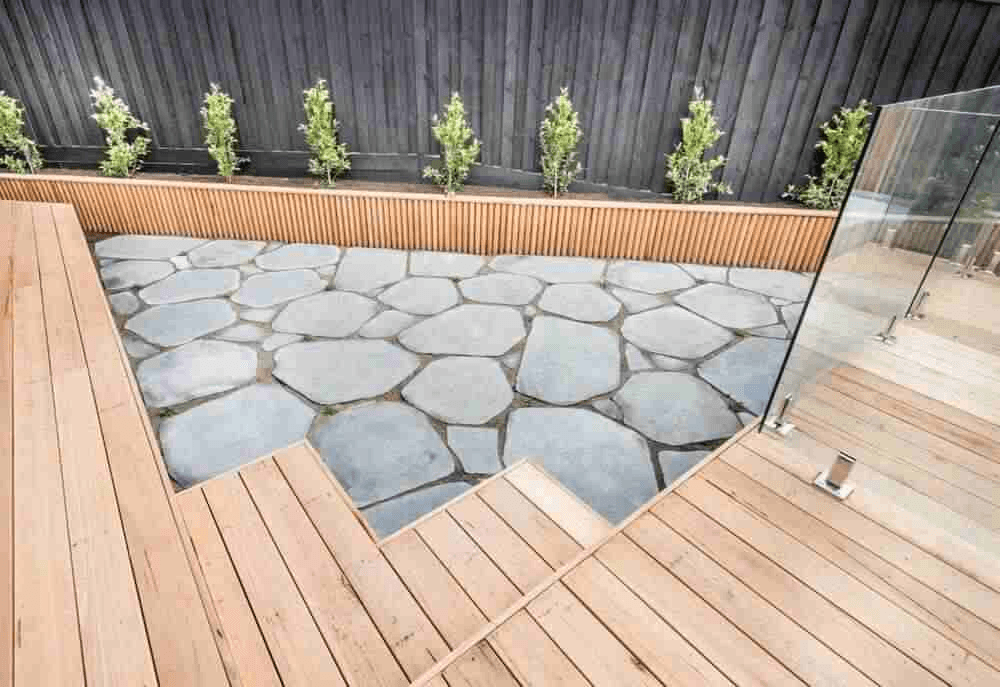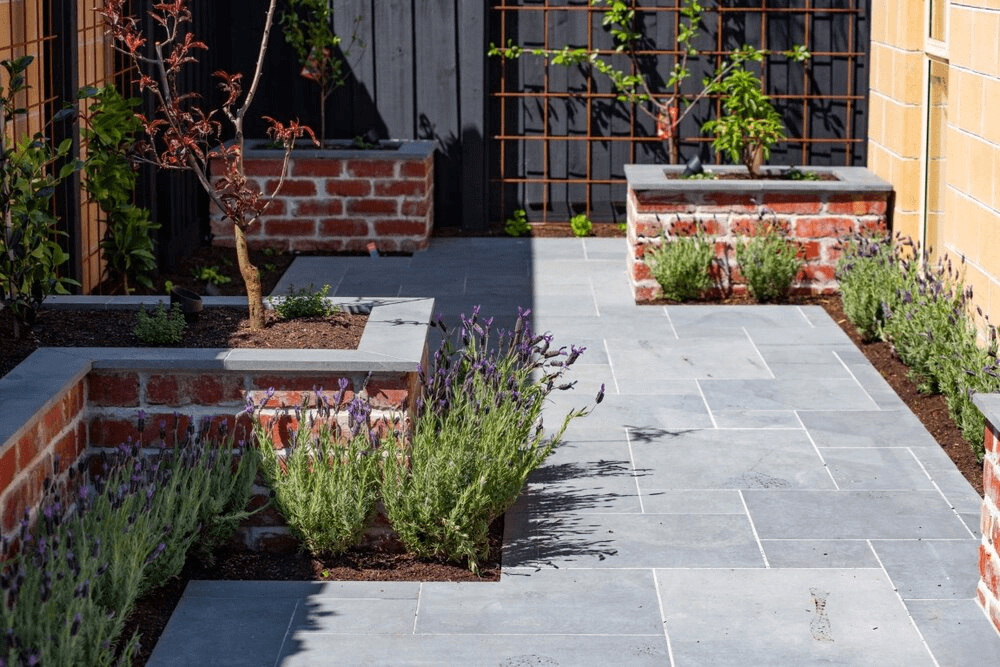- 26th November, 2022
- By Andrea Uren
14 Common Landscape Design Mistakes–And How to Avoid Them

Just like renovating your kitchen or bathroom, landscape design takes time, money, and effort, and you have to live with the results–and look at them–every day. And if you’ve ever tackled a landscaping project before, you know that even the smallest project usually entails more labor and hassle than originally expected. As a result, landscape design mistakes will haunt you–and cost you. These are good reasons to think carefully about what you want before starting your project and make sure you’re not about to fall into one of the following common landscape design pitfalls.
14 Common Landscape Design Mistakes to Avoid
We’ve seen–and fixed–a lot of landscape design blunders in our time. Not only are badly designed outdoor spaces often ugly and inefficient, but they can also be expensive if the design needs to be overhauled soon after it is installed. Here are some mistakes that are easy to avoid if you plan ahead.
1. Not Planning Your Space Wisely. Even the smallest garden or courtyard can become a useful and beautiful area if the space is thoughtfully used. Creating raised garden beds and placing them within the space, and not just on the boundary, adds both growing area and interest. Walls can also become a focal point when lined with space-efficient espaliered fruit trees.
2. Trying to Eliminate Maintenance by Overusing Hard Surfaces. We’re all busy, and sometimes it’s tempting to cover large areas of a yard with concrete or pavers in an attempt to create a low-maintenance garden. This can lead to a landscape that lacks the feeling of being in nature as well as the softness that living plants can bring. Don’t forget that plants are the landscape hero and some plants, correctly chosen, are low maintenance and easy to work with. While they all plants require some attention, the right plants for a space will look great without constant watering or pruning.

3. Compromising Design to Fit the Budget. A good motto for a landscaping project is: do it once, do it right. Taking shortcuts for budget reasons could leave you unhappy every time you look at a backyard that compromises your vision. Compromising on quality products also bites you twice when you need to replace inferior materials that don’t hold up to the elements. In the images below, we removed inferior sleeper walls and a deck that was rotting; both were in bad shape due to poor construction.

4. Going Too Small. Size matters, and it’s often a good idea to scale a feature up. For instance, faced with a decision to make a staircase wider or narrower, a pool longer or shorter, or a pergola higher or lower, go big. The firepit seating area in this project is oversized to make good use of space and to ensure it stays in proportion with the size of the house.

5. Not Paying Enough Attention to the Soil. A landscape design mistake we see frequently is to overlook parts of the design that aren’t visible, like the soil. Nutrition is the key to plant health and it really does start at root level. Quality soil will support your plants’ growth and make them easier to maintain. As we say, it’s better to plant a 50-cent plant in a $5 hole, than a $5 plant in a 50-cent hole. This Mt. Martha project used enriched soil along with underground drip irrigation to ensure the trees, ground covers, and perennials would thrive season after season.

6. Ignoring Easements and Boundaries. It’s important to be aware of any rules or permits that might prevent you from building close to boundaries due to fire regulations, as well as easements for things like sewer lines. If you don’t properly understand and follow these regulations, you could end up spending money on decking or paving that would simply have to be removed again at your own cost.
7. Choosing Too Many Different Materials. A common landscape design mistake is not choosing materials like pavers that are consistent with a cohesive theme. Using too many different materials or materials that do not coordinate makes the space look like it was pieced together with no intention or plan. This makes the space feel busy and smaller than it actually is. This can also occur when too much variation is used in plant selection. For this reason, mass planting often has a better visual effect. In the photo below, the brick and pavers become visually cohesive through the use of the same colour grout between the red bricks and the bluestone pavers, along with a single planting (lavender) for the border that prevents the space from looking too busy.

8. Keeping Too Many Elements From Your Previous Design. Sometimes, we find it is easier to start fresh. Elements that look fine when they are the best part of a not-so-great garden may become the worst part of a fresh new space. Be very selective in the items you choose to keep and make sure they are worth it. This includes both hardscaping elements and plants.
9. Not Creating Year-Round Interest. An easy landscape design mistake is to primarily choose plants that look best in just one season. This might mean choosing too many deciduous plants, too much evergreen, or an overabundance of perennials that flower in one particular season. This mistake is often a product of retail nursery shopping, as nurseries showcase only the plants that look best that time of year. For instance, if you only buy plants that look great in spring, it is likely that your garden will look beautiful in spring, but be lacking the remainder of the year.
11. Arranging Everything in a Single View. While it may seem counterintuitive, designing an outdoor space so that the view is blocked in some way and the entire space is not immediately visible in one go creates an illusion of more space and adds interest
12. Overusing Flowers. While we love the colour and beauty that flowering plants bring to a garden, they aren’t the only choice, and often flower only during one season. For year-round interest, you’ll want to buy plenty of foliage plants as well. The texture, colour, and shape of these plants add character and visual interest to the landscape throughout the year.
13. Not Taking in the View from the Inside. When planning the design of your backyard space, it’s easy to forget that you’ll likely spend just as much–or more–time looking at the space from indoors as you will spend outside. Getting a good view of the garden from the windows is important.
14. Choosing Plants and Materials That Cause a Colour Clash. Too many colours, and ones that are not in harmony, can cause a distraction, making the garden look cluttered and unnecessarily busy. Decide on a colour palette from front to back that is cohesive. This will allow your eye to rest easily.
 A Professional Landscape Designer Helps You Avoid Common Design Mistakes
A Professional Landscape Designer Helps You Avoid Common Design Mistakes
At Foliage Landscaping, we’re familiar with these landscape design mistakes because we’ve seen them all before on the Mornington Peninsula. These mistakes happen when homeowners design their own backyards without understanding the plants and materials they choose, when they cut corners for a cheaper result, when they fail to plan the space before starting work on it, or when they hire an inexperienced designer or contractor.
You don’t have to make the same mistakes; our landscape designers know how to make the most of your space by choosing beautiful and long-lasting plants and materials that suit your home and style. Our expertise ensures that your landscape design comes out right the first time. We’ll create a master plan for your yard as well as a quote, so you know ahead of time how your outdoor space will look and what it will cost.
Contact us today to talk with an expert.